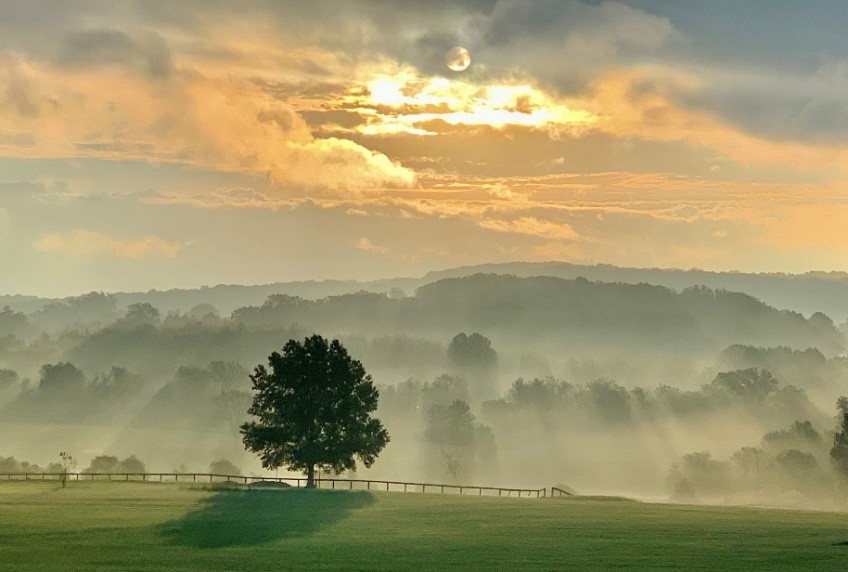The Future of the Conservation Easement
By Robert Banner for ELCR
Looking at the vast network of tools we have established for the protection of land, there is no more powerful tool than the conservation easement. Created in the early 1960s, conservation easements held by various land trusts now blanket sensitive areas hosting equestrian, historic, and scenic treasures. Together landowners and land trusts stand as a solid line of defense against the development of our precious open space.
Wisely, the conservation easement was developed to last in perpetuity. But, as the world faces a tsunami of change, the land trusts that hold and defend these easements are facing challenges. Are we ready for the next 10 years? 50 years? 100 years? And beyond?
Recently, the leaders of Virginia’s conservation community weighed in to relate the challenges they face.
Threatened by the crush of data centers, transmission lines, and residential growth, Virginia’s land (much of it hosting equine use for centuries) will be tested in the very near future. Rest assured, they are prepared. But what are their pinch points? What are their fears? Will the conservation easement stand the test of time?
Bob Lee led the Virginia Outdoors Foundation (VOF) as Executive Director for nine years, beginning in 2005. The VOF was created by the Virginia General Assembly in 1966 and protects more than 860,000 acres. Lee explains that Virginia Senator FitzGerald Bemiss and attorney George Freeman set the agenda in motion, recommending formation of the VOF as a state land trust where the protections carry legislative teeth.
The Virginia model grew quickly. After VOF, more than 22 land trusts (15 accredited by Land Trust Alliance) followed, encouraging a dense network of protection across more than a million acres of Virginia. While the program is one of the nation’s most successful, Lee warns that we must remain vigilant as we protect the conservation easement that protects us and our horses.
Lee points out that the Virginia Open Space Land Act authorizes conservation easements granted to public agencies, such as local counties and the VOF. Because these easements are held by government agencies, they are not subject to the eminent domain of other state agencies (Virginia Department of Transportation or public utilities); see Virginia Code 10.1-1704. While it is possible for an easement held under the Act to be released, the requirements for such a release by the VOF or another government agency are extremely rigorous and designed to replace any released easement with a new easement of equal or greater economic and conservation values.
The Virginia model mushroomed when the legislature voted to offer the most attractive reward of any state in the nation. In addition to federal tax deductions, Virginia offers landowners transferable state tax deductions called Land Preservation Tax Credits. Even if you don’t have significant Virginia state tax, the credits may be sold to those who do. It’s a very attractive reward, but Lee warns that the statute is subject to legislative change if we don’t continue to offer the public a significant benefit in return.
Chris Miller is Executive Director of the Piedmont Environmental Council. Founded in 1972, the PEC covers nine counties and holds more than 12,400 acres in conservation easement. One of the most effective community-based environmental groups in the nation, PEC protects the open space, historic landmarks, and air and water quality, too. Miller knows the future will involve negotiating compromises between zoning, landowners, and land trusts in order to sustain local and state support.
Sally Price led the Land Trust of Virginia, which holds more than 200 easements in the popular land trust. She agrees with Lee and Miller, but her concerns are based around the legal costs of enforcing the protections imposed by those easements, especially as land changes hands. Will new owners fully understand the deed restrictions that come with their property? Or sue to change the restrictions? If the land trust does not have a sufficient legal fund, the conditions they protect are at risk.Marie Ridder is now 96. Over her dedicated and successful career, Ridder has worked for numerous federal and state agencies, the VOF, the PEC, and the Chesapeake Bay Foundation, too. She was one of the first conservation easement donors in Virginia. Clear as a bell, she agreed with the others. When I asked her advice for the future, she said, “Two words Mr. Banner: birth control!” Since all the problems addressed relate to a growing population, who can argue with her? Virginia’s Loudoun County has exploded by more than 30% in 10 years. Simply put, more people from the city want more access to the countryside.
Sum total? While most leaders feel confident the protections of the conservation easement will stand the test of time, change is occurring quickly, and legal challenges are more frequent. Best advice? Be a part of the change.
Robert Banner is Senior Project Officer at ACRE Investment Management in The Plains, Va. ACRE is a full-service natural capital asset platform for landowners to manage their land. He can be reached at rob@acre-investment.com.



